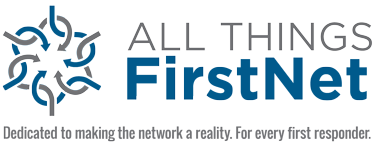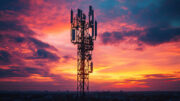
For police, fire, and EMS to be able to do their jobs — and save lives, they must be able to communicate with each other. Moreover, their means of first responder communications must be reliable, consistent, and interoperable — meaning that different agencies must be able to talk to each other no matter where they are from.
This didn’t happen during 9/11. Incompatibility issues and overloaded systems resulted in needless civilian and first responder casualties
The tragic lessons learned from 9/11 motivated Congress to support Public Safety’s effort to create FirstNet, America’s first and only dedicated public safety wireless network. It offers U.S. first responders a degree of reliable priority service and coverage that is unmatched by any commercial wireless network or land mobile radio (LMR) network anywhere on the planet.
What Is a Public Safety Wireless Network?
Sue Swenson is a member of the Public Safety Spectrum Alliance (PSSA), and a former Chair of the FirstNet Authority. She also served as CEO and President of Cellular One in the Bay Area, President of Leap Wireless, COO of T-Mobile USA, and as CEO of the software firm Sage Corp. before retiring in 2011.
“A public safety wireless network is one that’s dedicated to first responders,” Swenson said. “In times of need such as natural or man-made disasters, a public safety network ensures that police, fire, EMS, and other entities who support first responders can communicate with each other via smartphones, tablets, and wirelessly connected computers. Even when commercial wireless and landline networks are overloaded, as happened during 9/11, a dedicated public safety network like FirstNet ensures that their calls, messages, voice, and data transmissions always get through.”
What Sets FirstNet Apart from Commercial Networks
We have stated that FirstNet is the only public safety wireless network in the United States. Now let’s look at what makes it different from all the rest.
Network Priority and Preemption
FirstNet provides network priority and preemption on both the dedicated Band 14 spectrum as well as all spectrum in its entire network. What this means is that if the network becomes congested, First Responders will get priority access before other users. This is provided by AT&T who is under a 25-year contract. AT&T earned the right to utilize Band 14 through a competitive bid process and a contract with the government. Under this contract, all FirstNet first responder traffic has priority, meaning that it goes first — with no exceptions. If someone else is on the network that is not a FirstNet user, their calls get preempted: Again, with no exceptions.
No other carrier in the U.S. provides first responders with this kind of dedicated service.
Before FirstNet was created…individual first responder agencies built their own LMR systems, many of which could not talk to each other due to proprietary technology. Imagine that an iPhone user wouldn’t’t call an Android user; that’s what it was like
Band 14
Band 14 is high quality 700 MHz wireless spectrum that has been exclusively reserved by law for first responders. No one else can use it.
Congress has authorized FirstNet to use Band 14 exclusively to ensure priority service to first responders at all times. AT&T manages Band 14 for FirstNet: “Since launching the network in 2017, AT&T has ensured that Band 14 is only available to FirstNet users,” said Swenson., So first responders always have access to Band 14 and AT&T has also given FirstNet users priority and preemption on all of AT&T’s wireless spectrum, which is a great addition to the public safety network.
Wireless Coverage Across the United States During Disasters
FirstNet covers the U.S. better than any other carrier — including the remotest and most rural areas of the country. “This works out to about 250,000 more square miles than the competition,” Swenson said. “No one covers America more completely than FirstNet through AT&T.”
In addition to better coverage, FirstNet provides a fleet of deployable transmitter vehicles and trailers equipped to restore cellular service as soon as possible. These deployable assets provide temporary coverage and capacity during disasters as well as large scale events. The fleet ranges in size from a briefcase that you could carry on a plane, a unit that you put in a pickup truck and those that are larger on smaller trucks or large vans – such as SatCOLT’s(Satellite Cell on Light Trucks) or COW’s(Cell on Wheels).
These are provided to FirstNet customers at no extra charge.
FirstNet PTT (Push-to-Talk)
One of the great features of legacy handheld radios was their ability to perform basic connection functions with the punching of a single Push-to-Talk (PTT) button. FirstNet has captured this capability for use on its user’s smartphones with FirstNet PTT. It allows them to hit one button to contact other team members to deliver secure, high-priority group and one-to-one voice communication along with features like messaging, file sharing, location services, and live video streaming—all with AES-256 encryption.
How FirstNet Supports First Responders in the Field
Using the many features outlined above, the FirstNet public safety network is unmatched in its ability to support police, fire, and EMS in the field.
Connecting Teams Across Agencies
One of FirstNet’s biggest benefits is interoperability built on open 3GPP standards eliminating the fragmentation that once existed across tens of thousands of proprietary radio systems.
As a result, fire, police, EMS, and other critical agencies can communicate seamlessly, regardless of differences in location, jurisdiction, carrier, or device
The 7 million first responders who currently use FirstNet know that they can talk to each other without any issues. When lives are at stake, this is the kind of reliable 24/7 service that Americans demand for their police, fire, and EMS agencies.
Before FirstNet was created, this didn’t happen. Individual first responder agencies built their own LMR systems, many of which could not talk to each other due to proprietary technology. (Imagine that an iPhone user wouldn’t’t call an Android user; that’s what it was like.) As a result, it was common practice for a given first responder agency to store radios used by neighboring agencies, just so they could talk to them!
Evolving Wireless Infrastructure for Public Safety
Technology never stands still, and neither does FirstNet. This is why $6.3 billion is being invested over the next ten years to update the network to handle 5G traffic along with its current 4G/LTE capabilities and to expand wireless coverage. It is also why FirstNet is harnessing AI to enhance situational awareness, incident management, cybersecurity, remote triage, and telemedicine and overall, just helping with the increased data that will be available to First Responders. The simple reason FirstNet is unique from other service providers is that it has a plan, a promise, and oversight from public safety to keep it focused on first responder needs,” Sue Swenson concluded. “It is the only public safety wireless network of its kind anywhere in the world, and an accomplishment that first responders and Americans in general can be rightly proud of.”



Be the first to comment on "Importance of Public Safety Wireless Networks for First Responders"